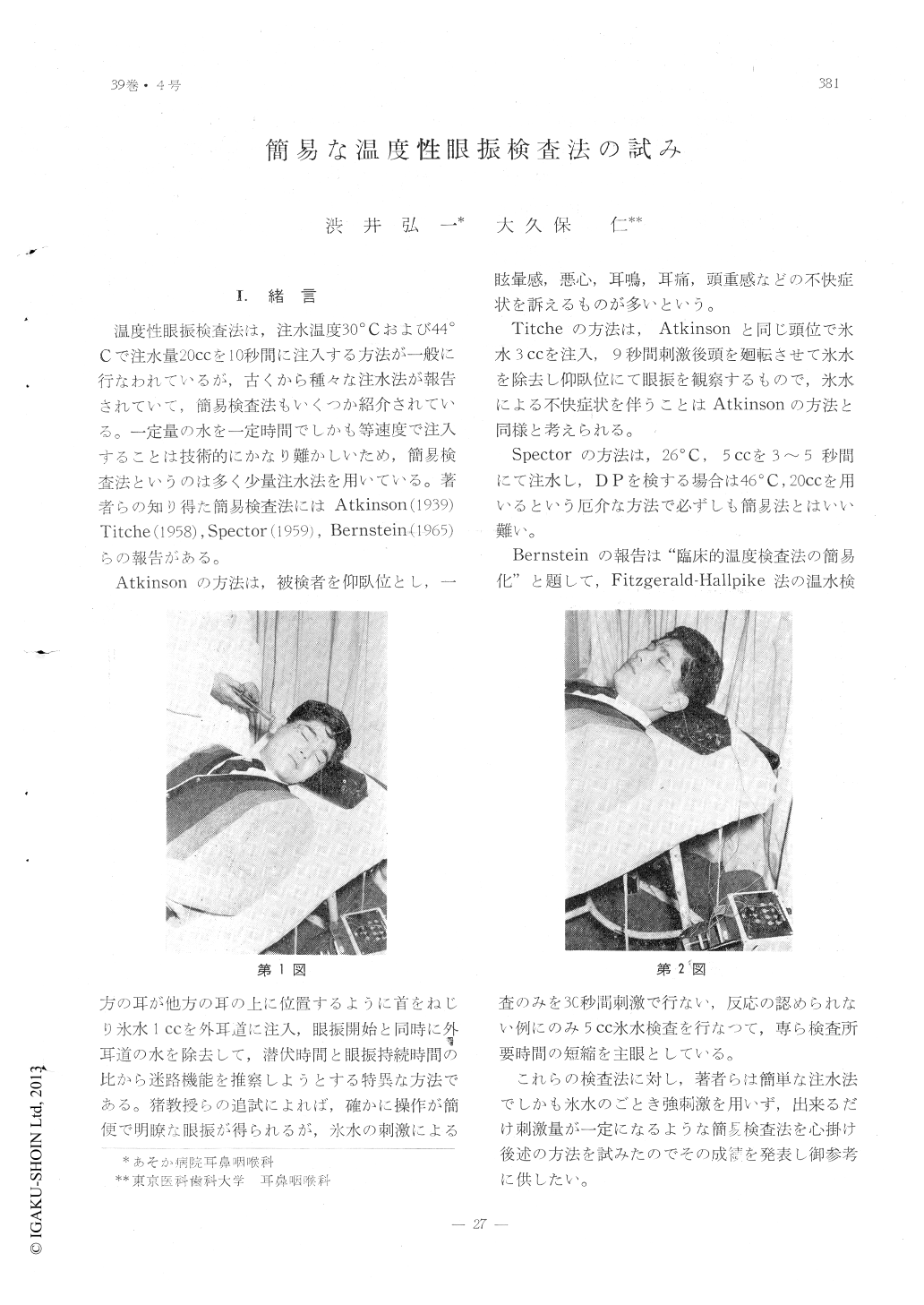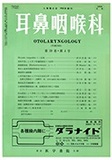Japanese
English
- 有料閲覧
- Abstract 文献概要
- 1ページ目 Look Inside
I.緒言
温度性眼振検査法は,注水温度30℃および44°Cで注水量20ccを10秒間に注入する方法が一般に行なわれているが,古くから種々な注水法が報告されていて,簡易検査法もいくつか紹介されている。一定量の水を一定時間でしかも等速度で注入することは技術的にかなり難かしいため,簡易検査法というのは多く少量注水法を用いている。著者らの知り得た簡易検査法にはAtkinson(1939)Titche(1958),Spector(1959),Bernstein(1965)らの報告がある。
Atkinsonの方法は,被検者を仰臥位とし,一方の耳が他方の耳の上に位置するように首をねじり氷水1CCを外耳道に注入,眼振開始と同時に外耳道の水を除去して,潜伏時間と眼振持続時間の比から迷路機能を推察しようとする特異な方法である。猪教授らの追試によれば,確かに操作が簡便で明瞭な眼振が得られるが,氷水の刺激による眩量感,悪心,耳鳴,耳痛,頭重感などの不快症状を訴えるものが多いという。
Thermic nystagmus may be easily and well elicited by a simple method of using a small amount of water enough to fill the external canal for the period of 40 seconds with the water temperature at 29 degrees and 45 degrees. The position of the head is initially turned on the other side for instillation of the water and later returned for watching for the onset of nystagmus. The duration of the nystagmus produced by this method was slightly shorter in lasting when compared to the orthodox method. The standard deviation of the nystagmus duration appeared larger in the former but that of the difference between the left and right was quite similar in both cases. This method is, therefore, regarded as being much more simple in carrying out the test. And, moreover, it is devoid of the unpleasant sensation that invariably accompanies Atkinson's method of instilling icecold water in the ear canal.

Copyright © 1967, Igaku-Shoin Ltd. All rights reserved.


